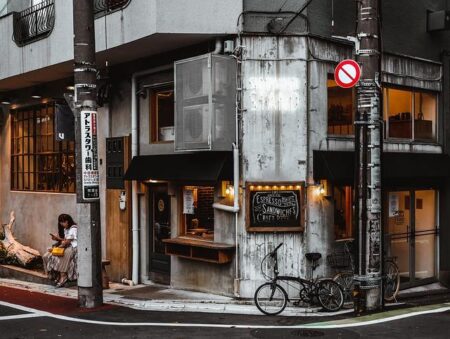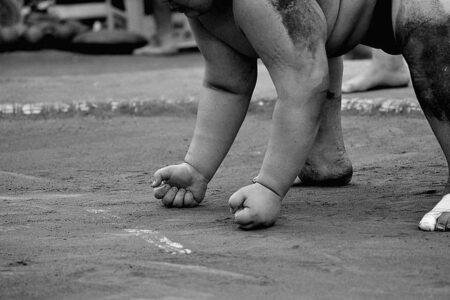Tokyo-Amid rising awareness of sustainability and shifting fashion trends, Japan’s younger generation is increasingly turning to vintage and secondhand apparel, fueling a surge in the country’s resale market. Once considered a niche segment, the secondhand clothing industry has rapidly expanded as youths seek unique styles and affordable options, reflecting broader changes in consumer behavior. This growing interest is reshaping Japan’s fashion landscape and signaling a robust future for the vintage apparel market.
Japan’s Youth Drive Surge in Vintage Apparel Popularity Amid Rising Secondhand Market
The resurgence of vintage apparel among Japan’s younger generation marks a significant shift in consumer preference within the nation’s thriving fashion industry. Young buyers are increasingly drawn to unique, one-of-a-kind pieces that embody both history and individuality, propelling the secondhand market to new heights. Retailers report that demand for items from the 70s, 80s, and 90s has steadily climbed, fueled by social media trends and an amplified awareness of sustainable fashion practices.
This growing enthusiasm has also sparked innovation and adaptation within the marketplace. Secondhand sellers have embraced digital platforms to create immersive shopping experiences, allowing customers to explore curated collections online. A recent study highlights key factors behind this trend:
- Environmental consciousness: Youth consumers prioritize eco-friendly purchases.
- Authenticity: Vintage items offer craftsmanship and character absent in fast fashion.
- Affordability: Secondhand prices provide budget-friendly alternatives.
- Cultural nostalgia: A connection to past decades influences style choices.
| Vintage Era | Popularity Growth (2020-2024) | Top Item Categories |
|---|---|---|
| 1970s | 35% | Denim Jackets, Leather Boots |
| 1980s | 50% | Graphic Tees, Windbreakers |
| 1990s | 60% | Overalls, Plaid Shirts |
Sustainability and Style Merge as Young Consumers Choose Eco-Friendly Fashion Options
In recent years, Japan’s younger generation has been revolutionizing their approach to fashion by turning to vintage and secondhand apparel. This shift reflects a deeper awareness of environmental impact combined with a desire for distinctive style. Local thrift shops and online marketplaces have reported a surge in demand, with many young buyers prioritizing quality and sustainability over fast fashion trends. This phenomenon not only reduces textile waste but also fosters a circular economy within the apparel industry.
Key factors driving this movement include:
- Affordability: Vintage items offer unique pieces at budget-friendly prices.
- Exclusivity: Buyers reject mass-produced styles in favor of one-of-a-kind finds.
- Environmental concern: Conscious consumerism steers youth toward eco-friendly alternatives.
| Apparel Type | Popularity Increase (2020-2023) | Average Price (Â¥) |
|---|---|---|
| Denim Jackets | +35% | 3,500 |
| Graphic Tees | +50% | 1,800 |
| Leather Boots | +20% | 6,200 |
Experts Advise Tips for Navigating and Investing in Japan’s Growing Vintage Clothing Scene
As Japan’s vintage clothing market experiences a surge in demand, industry experts recommend a strategic approach to navigating this dynamic scene. Prospective investors should prioritize authenticity by inspecting labels, stitching, and fabric quality since genuine vintage pieces often boast superior craftsmanship. Networking with local sellers and participating in niche community events can provide invaluable insider knowledge and early access to rare finds. Experts also suggest diversifying purchases across different eras and styles to mitigate risk and capitalize on fluctuating trends within Japan’s diverse fashion history.
Furthermore, understanding the resale potential is crucial for maximizing returns. The following table summarizes key considerations when investing in vintage apparel within Japan’s secondhand market:
| Investment Aspect | Expert Tips |
|---|---|
| Condition | Look for minimal wear, intact labels, and original buttons. |
| Era | ’70s and ’80s pieces show rising popularity among youth. |
| Authenticity | Verify with trusted vintage shops or use authentication apps. |
| Resale Potential | Monitor social media trends for trending brands and styles. |
- Explore regional markets: Tokyo’s Shimokitazawa and Osaka’s Amerika-mura are goldmines for unique vintage finds.
- Attend vintage fairs: Seasonal flea markets expose buyers to rare collections and direct seller negotiations.` element, along with a cleaner formatting for continuity:
- Attend vintage fairs: Seasonal flea markets expose buyers to rare collections and direct seller negotiations.
If you’d like, I can help enhance this content further or assist with styling or interactivity. Just let me know!
Insights and Conclusions
As Japan’s younger generation increasingly turns to vintage apparel, the secondhand market shows no signs of slowing down. This shift not only reflects changing attitudes toward fashion and sustainability but also signals a broader transformation within the country’s consumer culture. Industry experts suggest that the continued growth of this trend could reshape retail landscapes and influence global fashion dynamics in the years ahead.




